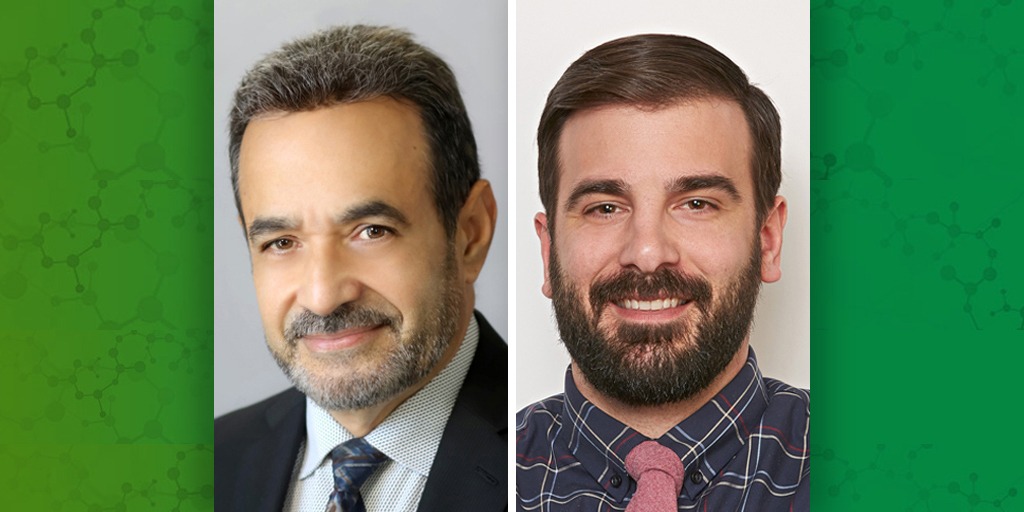Enhancing professional opportunities for Hispanic individuals across the National Institutes of Health (NIH) and removing barriers for disabled employees were some of the issues addressed during two recent talks in the NIEHS Diversity Speaker Series. The institute’s Office of Science Education and Diversity (OSED) sponsored both events, which recognized Hispanic Heritage Month and National Disability Employment Awareness Month, respectively.
Gerard Roman, a former equal employment opportunity specialist at NIEHS who now leads the NIH Special Emphasis Portfolio for Hispanics, presented “Different as Me: Embracing My True Self” on Sept. 28. David Rice, who manages the NIH Special Emphasis Portfolio for People With Disabilities, discussed ways to improve those individuals’ workplace experiences on Oct. 19. Both are principal strategists in the NIH Office of Equity, Diversity, and Inclusion.
How Hispanic population growth in the U.S. translates into the NIH workforce was the focus of Roman’s talk. Rice, who revamped the agency’s mission statement to reduce stigma of disability, discussed person-first approaches to inclusion and the Human Rights Model of Disability.
“We support an environment where the expectations and perspectives of everyone are represented and valued,” said Roman. “We engage our communities and help identify and address challenges that could keep employees from reaching their full potential.”
Hispanic workforce representation
 NIH recognized National Hispanic Heritage Month Sept.15 – Oct.15. (Image courtesy of NIH)
NIH recognized National Hispanic Heritage Month Sept.15 – Oct.15. (Image courtesy of NIH)“For many years, low representation of Hispanics in the workforce has been one of our greatest challenges,” noted Roman.
The Hispanic and Latino population grew 23% between 2010 and 2020, according to 2020 U.S. Census results. However, noted Roman, just 3.9% of the NIH workforce self-identify as Hispanic or Latino, which remains lower than the 10% Civilian Labor Force benchmark set by the agency more than a decade ago.
Roman said he strives to achieve greater workforce equity by assessing barriers that cause disparities. He engages communities and NIH colleagues to identify challenges, promote best practices, and partner with internal and external entities to develop solutions. According to Roman, one successful effort involves collaboration with the Federal Training Institute, which includes the League of United Latin American Citizens and members of several federal agencies.
Person-first approach to inclusion
 NIH recognized National Disability Employment Awareness Month in October. (Image courtesy of NIH)
NIH recognized National Disability Employment Awareness Month in October. (Image courtesy of NIH)When it comes to inclusion efforts for individuals who are disabled, slight changes to models of care, technology, and language can lead to profound and positive effects, according to Rice.
Major approaches to disability include charity and medical models and social and human rights models, but they are not equally beneficial for purposes of inclusion, he noted. The first two focus on disability as a problem to solve, whereas the latter place dignity center stage.
“The social and human rights models aim to make society a more accessible place,” Rice explained. “In the social model, we remove barriers and encourage society to be more accepting and accessible. The human rights model emphasizes respect and dignity for all persons.”
Such an approach to disability inclusion also applies to language and technology.
“Language is powerful,” Rice said. “When in doubt, try to put the person first, then the disability. For example, person-first language includes phrases such as ‘people with disabilities’ or ‘David Rice, an individual who is deaf.’”
That technique removes barriers and shifts focus toward embracing diversity and being inclusive, even in virtual spaces, according to Rice.
“Sometimes, people think it is a burden that we must change for people with disabilities, but people with disability have the same basic human right to access information, so we should make technology an accessible space for everyone,” he added.
“This is extremely important with the new virtual world we live in,” said Rice. “We are making tremendous strides and improving, but we are not finished.”
Diversity Speaker Series
OSED Director Ericka Reid, Ph.D., leads the Diversity Speaker Series working group and hosts each event. The goal is to emphasize positive, equitable, and inclusive employment experiences for federally identified underrepresented groups and to promote each of the seven NIH Special Emphasis Portfolios. This year’s talks conclude with Native American Heritage Month. Ashley Wells, NIH principal strategist for Native American employees, will be speak Nov. 30.
(Jennifer Harker, Ph.D., is a technical writer-editor in the NIEHS Office of Communications and Public Liaison.)
Source link
factor.niehs.nih.gov

